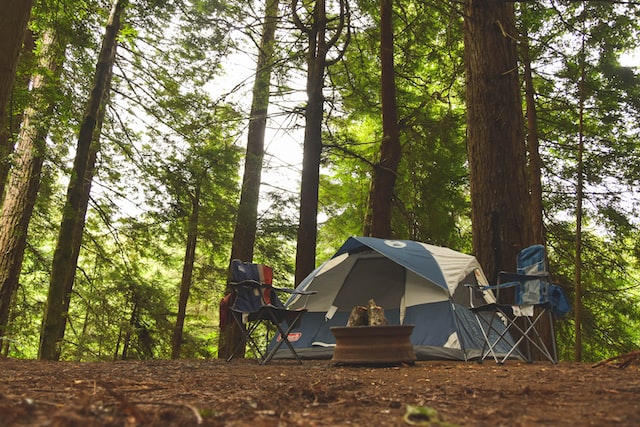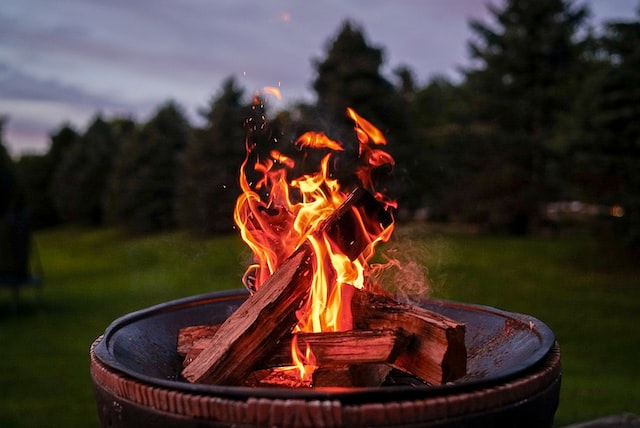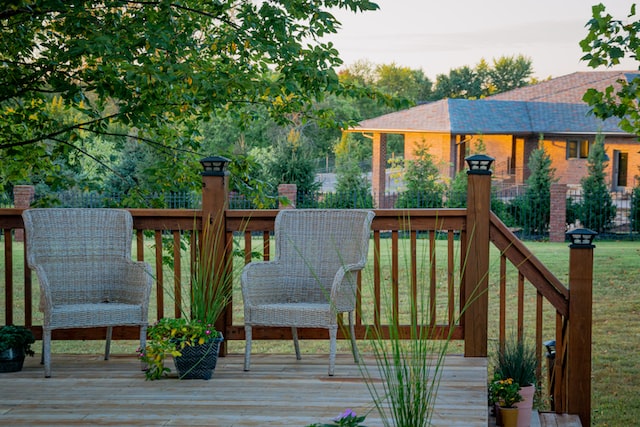The season is changing and it’s time to change along with it. Put your summer clothes aside and bring out your fall and winter wardrobe. Declutter the summer fun and find ways to store it before fall arrives. Before you start, plan not only where you’re going to store all your summer gear but how you’re going to best prepare that equipment for use next year.
Through proper storage and preparation, your summer gear will be safely stored and ready to go no matter how cold and snowy winter gets. The goal is storage safety, which protects your things from the weather and prevents mishaps in the storage unit or garage. Winter storage should be a respite from wear and tear for your summer equipment, so when you come looking for it in the Spring, everything is at its best.
Outdoor summer gear
With cold temperatures comes snow, ice, and high winds. It’s time to store all your summer equipment/gear that you’ll no longer need. By taking the time to do this properly, you’ll save time and money come Spring. You’ll know where everything is and exactly what condition it was left in. You’ll know you took the proper care for each item, which gives those items longer lifespans and smaller maintenance costs over time.
Winter weather is no friend to patio furniture, equipment, and outdoor gear used for family gatherings or lawn care. With proper care and effort before you store your seasonal belongings, all this equipment should be ready for action almost out of the box once spring returns. You’ll save money in the long run thanks to the work you put in today.
Patio furniture
Before you store your summer gear, give them a thorough cleaning. Patio cushions should be completely dry before storing, so they don’t get any mold or mildew. Store them in plastic bags somewhere dry. Use a sun and water-resistant tarp to cover your wicker chairs and tables. If your furniture is made from canvas or fabric and you plan to cover it with a tarp, sprinkle some baking soda on it first to minimize moisture damage.
Anything made from plastic or resin, such as children’s play sets, can be left outdoors. If you want to maintain their appearance, keep them covered in the cold months. For fabric-based furniture, like tents, gazebos, umbrellas, and awnings, wash them down and store them inside for the winter. The fabric on these products doesn’t stand up to snow and ice and will be destroyed if left outside. If the fabric is waterproof, make sure there are no leaves on it; they may damage the waterproofing when they rot. Warm soapy water is best to clean these fabrics, but ensure they’re completely dry before storing them to prevent mold and mildew.
Remove soil from plants and bring them inside, so they don’t blow away. Cover or store your air conditioning unit based on what the manufacturer recommends.
If you have treated wood furniture, it can be left outside with a proper cover. Use a furniture oil or protective sealant on wooden furniture to protect it. Before sealing, thoroughly clean it with warm water and an oil-based soap. Gently scrub along the grain of the wood with a soft brush to prevent scratches. Rinse it off (though avoid using the hose for this, as you don’t want the wood to be too wet) and let it fully dry. Once clean and dry, rub the furniture oil on the product, then apply a sealant. If you have space inside a garage or shed, store your wooden furniture there.
Home outdoor gear
If water freezes inside your garden hose, the material may tear or burst. To prevent this, turn off the outdoor water tap, remove the hose, and drain all the water inside. Remove the nozzle and ensure you wipe it dry before storing it. Curl the hose in loose loops indoors, ideally on a hook to keep its coil.
If you need to store organic matter, such as mulch, compost, or garden soil, your primary concern will be preventing mold and fungus growth. Pour loose mulch onto a heavy tarp, then cover it with a second tarp. Leave some edges loose for airflow. If your mulch is sealed, add a few holes to the bags for airflow. Garden soil and compost can be kept in plastic containers in a dry area. Compost should be turned periodically with a shovel so it doesn’t clump. Any unopened bagged garden soil can be stored as-is in a dry area.
Dry fertilizers, such as granules or powders, can be left outside for the winter. They may cake together and need to be broken up come springtime. Liquid fertilizers expand and can burst when freezing, so they should be kept indoors. Some can be kept outdoors, but be sure to understand what temperatures they can withstand and follow the guide on the label.
This is the perfect time to inspect your grill for any needed repairs and then clean it. Scrub the grates to prevent the growth of bacteria, then coat them with cooking oil to prevent rust. For a charcoal grill, remove and store all the charcoal in a garage or shed. Propane tanks can’t be kept indoors. Your grill can be left outside if it is properly covered with a fitted tarp.
For a fire pit, clean off any debris, turn off the gas, and remove the tank. Tanks should be stored outdoors, covered and upright. Remove lava rocks and wash the burner. A fire pit cover should be snug to prevent water from pooling on top of it.
For any children’s areas, it depends on the item. Remove any plastic pieces and take them inside. Wooden swing sets can be treated the same as wooden furniture. If you have a pool, any floats or toys should be set in an airtight container (provided they’re perfectly dry first). Water kits for testing, opening, or closing the pool should all be stored inside.

How to store your summer sporting gear
When it comes to outdoor sporting gear, the tent is a great place to start. Set it up so you can check for tears or holes, and hand-wash any serious dirt with some diluted soap. Air out the tent somewhere shady to dry. The ideal way to store a tent is to lay it flat somewhere animals can’t get to it, or loosely roll it. If you plan to keep it packed tightly in a sack, it may crease or develop weak spots.
If your sleeping bag needs a wash, use cold water and gear-friendly soap. Use an unheated dryer afterward, with a tennis ball in there to restore the loft. Once it’s completely dry, store it somewhat loosely in a mesh bag in a cool and dry place. For a sleeping pad, wipe it with a soapy cloth and rinse it with water. Once fully dry, store it loosely rolled, partially inflated, with the valve open.
Any inflatable watercraft, such as stand-up paddleboards, should be set up, cleaned, and left to dry somewhere shady. Once it’s about 75% deflated, store it out of the elements. Deflating and rolling these watercrafts for storage drops their lifespan by a wide margin.
For any outdoor cooking equipment, wipe them down like you would for those you keep in your kitchen. If you have a gas line outdoor stove, light it and then shut the gas off at the bottle, not the stove. This lets the gas flush through the line to the burner completely. When it stops, the line is clear. Be sure you know your state laws regarding storing any fuel.
For hiking boots, pull out the insoles and give the boots a light wash with water and mild detergent. If they’re leather, use a leather cleaner and a soft brush. Hang them upside down until they’re completely dry. If your soles are separating, use silicon glue to fix them and replace fraying laces. If the boots are leather and deteriorating, apply a leather conditioner and then re-waterproof them with silicon wax. Hiking boots are best stored in the bottom of a closet or a dry, low-light place.
Bicycles can be harmed if you clean them too vigorously; there are so many delicate moving parts involved and lubricants that can be washed away. Fill a spray bottle with warm water and a little bit of mild dish soap, and simply spray the whole bike down. Use a soft brush to tackle the dirt and grime, especially on the drivetrain and chain. Rinse it with a bucket of clean water, then wipe it down with a soft towel or cloth afterward so it’s not dripping wet.
The most ideal way to store a bike is on a hook. If you don’t have a hook or rack set up, consider asking a handyman to build one that’s convenient and accessible but also out of the way.
Like bicycles and hoses, ropes should be hung for best storage. Loosely coil them, and hang them over two hooks or nails. Climbing gear like harnesses should be cleaned, laid flat, and put somewhere dry. Store your climbing shoes and cams with them so everything is in one ideal space. If you fish, store your rods in a rod tube. Set your boots and waders in a container, and store them somewhere dry.
Prep summer clothes for winter storage
The fall is a great time to transition your closet from summer wear to winter attire. While you’re making the switch, use the opportunity to look at your clothes and decide what you no longer want to keep. For the clothing you want to keep, be sure it’s clean, dry, and undamaged before you store it. Be aware that starch is not advised on clothes before you store them. It can attract pests that will ruin the materials.
Clothes should be stored somewhere dark and dry, like in a closet or perhaps under the bed. The area should be well-ventilated. Wherever you choose, ensure it’s cleaned first and that any mold or mildew is thoroughly dealt with. Attics, basements, and garages should be avoided when storing clothing.
If your clothes are going to hang while in storage, use sturdy hangers that don’t rust or discolor the fabric. Wire hangers are best avoided. Hang jackets on shaped hangers to keep the shoulders intact, and skirts and pants should be hung by the waistband on skirt hangers to prevent creases.
If you plan to store the clothes in storage bags, run the bags through the washer first. This removes any potential mold spores. Fabric bags are ideal, as they let in airflow. If you’re on a budget, use an old sheet with some hanger holes cut into it as a fabric storage bag for your clothes. This keeps any dust and dirt off them. You can also store clothing in a storage box, which is preferred for knit clothing. Cardboard containers need to be acid-free so your clothing doesn’t get stained or yellowed. If stored in a plastic container, it should be made from polypropylene.
Storing shoes is similar to storing hiking boots. Remove the soles and clean them (or use a leather cleaner if they’re leather), then hang them upside until completely dry. Shoes are best left in a dry, dark location where the temperature doesn’t fluctuate often, like a closet or under the bed. Keep shoes and boots in shoeboxes to keep the dust off.

As the seasons transition, it’s not just about swapping out your wardrobe from summer to fall and winter; it’s also an opportunity to protect your belongings and save on potential maintenance costs, including those covered by a home warranty. Autumn is a great time to shift into winter. As you go through your summer gear, clothing, and equipment, take time to look everything over. Give them a thorough clean, and if they need repairs, set a reminder to get those done before the snow flies. Next spring, when you transition back, you’ll be proud of the condition your gear is in. It can be time-consuming, but this maintenance and storage routine can breathe life into various gear.
It’s also a great time to declutter your space. If you went through the whole summer without wearing those pants or that dress, do you really want to keep it? What about that basketball hoop that sat in the garage for the entire season? Use this time to really decide what you want to keep. Maintain those items, donate the rest, and head into winter ready for anything the season throws your way.




